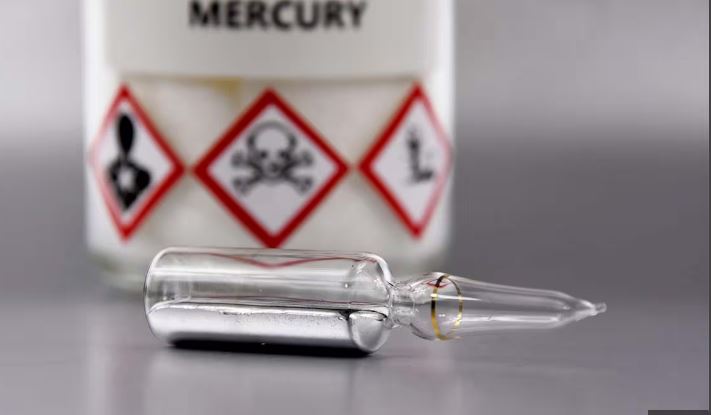Mercury is a heavy metal with several industrial and medical applications. It exists in various forms, including elemental mercury, inorganic mercury compounds, and organic mercury compounds like methylmercury. Despite its useful properties, mercury poses significant health risks, making proper handling and understanding of its toxicity crucial for safety in both occupational and environmental contexts.

Handling and Risks of Mercury Toxicity
Mechanism of Mercury Toxicity
Mercury toxicity primarily results from its ability to accumulate in the body over time. Elemental mercury vapor, when inhaled, can pass into the bloodstream through the lungs and affect the nervous system. Inorganic mercury compounds, when ingested or absorbed through the skin, can damage the kidneys and other organs. Organic mercury compounds, especially methylmercury, are highly toxic and can disrupt neurological development and function. These compounds can accumulate in the food chain, particularly in fish, posing risks to both humans and wildlife.
Health Impacts of Mercury Exposure
Exposure to mercury can lead to a range of health issues depending on the form of mercury and the level of exposure. Short-term exposure to high levels of elemental mercury vapor can cause symptoms such as tremors, memory loss, and mood disturbances. Chronic exposure can lead to severe neurological and cognitive impairments. Inorganic mercury exposure can result in kidney damage, gastrointestinal issues, and skin irritation. Methylmercury exposure is particularly harmful to the developing nervous system, causing developmental delays, motor dysfunction, and cognitive impairments in children. Pregnant women and young children are especially vulnerable to the effects of mercury toxicity.
Occupational and Environmental Risks
Occupational exposure to mercury is a significant concern in industries such as mining, manufacturing, and healthcare. Workers handling mercury-containing products, such as thermometers or dental amalgams, are at risk of exposure. Environmental contamination can occur from industrial discharges, improper disposal of mercury waste, or mercury spills. Mercury from industrial activities can enter water bodies and bioaccumulate in fish, leading to risks for people consuming contaminated seafood. Proper management and mitigation strategies are essential to reduce these risks.
Safety Regulations and Handling Procedures
Due to the severe health risks associated with mercury, strict safety regulations and guidelines govern its handling and disposal. Personal protective equipment, such as gloves and masks, should be used when working with mercury. Adequate ventilation is crucial to minimize exposure to mercury vapors. Spills should be promptly cleaned up using appropriate procedures to prevent contamination. Disposal of mercury-containing waste requires adherence to hazardous waste management protocols to avoid environmental contamination.
Detection and Diagnosis
Diagnosing mercury poisoning involves a combination of medical history, symptoms assessment, and laboratory tests. Blood and urine tests can measure mercury levels and indicate exposure. Medical imaging may be used to assess organ damage. Early detection is critical for effective treatment and minimizing long-term health effects. Individuals with known mercury exposure should undergo regular health check-ups to monitor for potential toxicity.
Prevention and Awareness
Preventing mercury exposure requires awareness and proactive measures. Individuals working in high-risk occupations should receive proper training on safe handling and emergency procedures. Public awareness campaigns can educate about the risks of mercury, especially in relation to seafood consumption and environmental contamination. Proper disposal of mercury-containing products and adherence to safety guidelines can significantly reduce the risk of mercury poisoning.
Conclusion
Mercury toxicity poses significant health risks, ranging from neurological impairments to kidney damage. Understanding the mechanisms of mercury toxicity and implementing stringent safety regulations are essential for preventing exposure and protecting health. Awareness, proper handling procedures, and effective prevention strategies can mitigate the dangers associated with mercury and ensure a safer environment for all.




